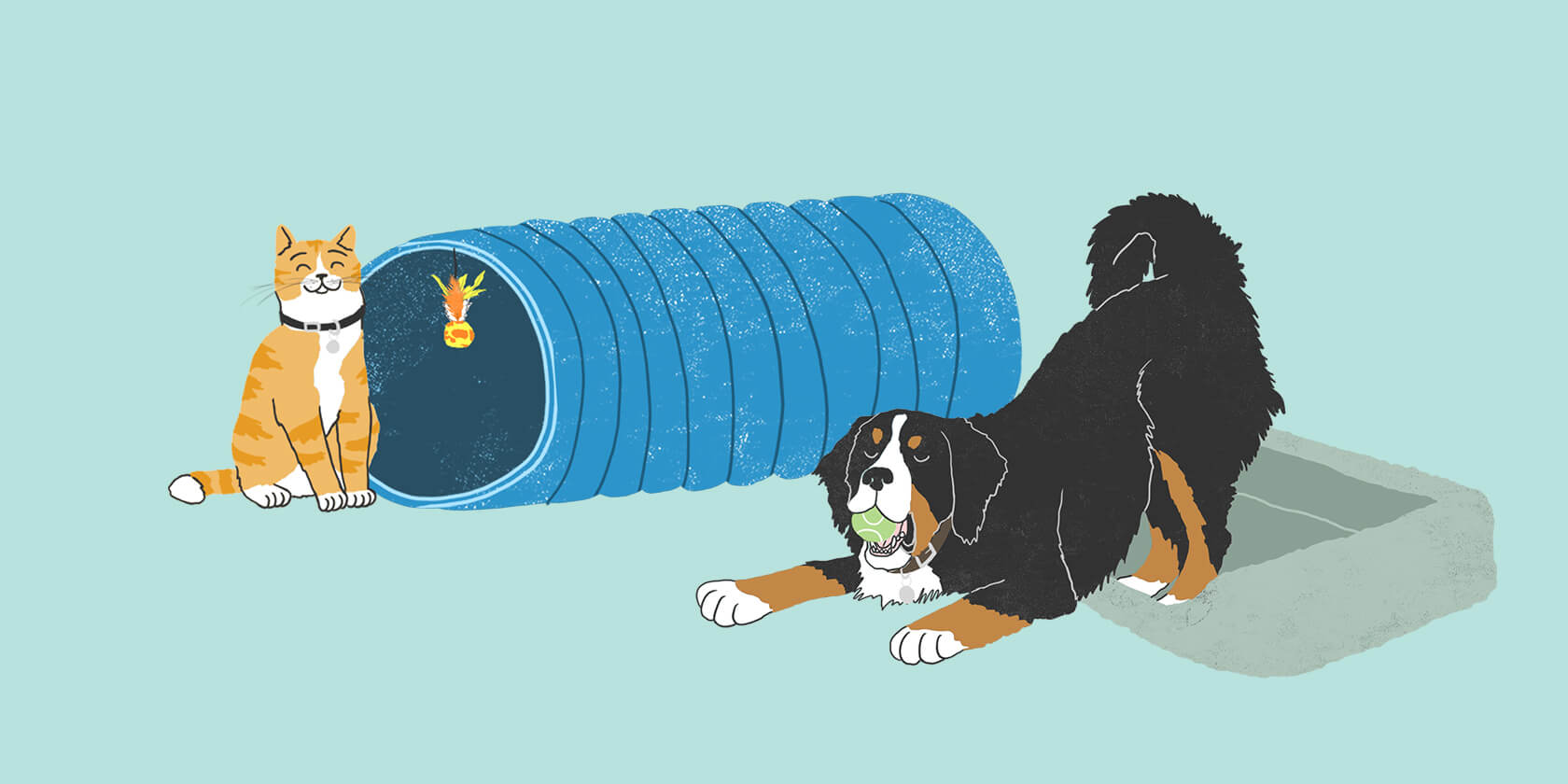
The Role of Playtime in a Pet’s Happiness
Playtime is not just fun for pets; it is essential for their happiness and overall well-being. It strengthens the bond between pet and owner, provides necessary physical exercise, and stimulates their minds, preventing boredom and anxiety. Engaging in regular play enhances their social skills, improves their health, and ensures they lead a fulfilling and joyful life. Understanding the importance of playtime can make a significant difference in a pet’s emotional and physical well-being.
🐶 Pet Star
13 min read · 29, Jan 2025

1. Strengthening the Bond Between You and Your Pet
When you play with your pet, it creates a deep emotional connection. Whether it’s tossing a ball, using a feather wand for a cat, or even playing hide and seek, these activities show your pet that they are loved and valued. Pets, just like us, crave attention and affection. A daily play routine builds trust and makes them feel secure in your companionship.
2. Physical Health and Fitness
Pets need regular movement to stay healthy. Just as we must stretch our legs, go for walks, or exercise to keep our bodies fit, animals also need the same. Playtime helps:
- Maintain a healthy weight, reducing the risk of obesity.
- Strengthen muscles and bones, ensuring mobility and agility.
- Improve cardiovascular health, reducing the risk of heart diseases.
For dogs, activities like running, fetch, or tug-of-war provide great physical workouts. For cats, interactive toys, climbing, and chasing objects fulfill their natural hunting instincts while keeping them active.
3. Mental Stimulation and Intelligence Development
A bored pet can become destructive, anxious, or even depressed. Playtime provides mental challenges that keep their brains active and sharp. Puzzle toys, treat-dispensing toys, and interactive games stimulate their curiosity and problem-solving skills.
Mental exercise is just as crucial as physical exercise. A well-stimulated pet is a happy pet. They need tasks that make them think, just as we enjoy solving puzzles, reading, or engaging in creative activities.
4. Reducing Anxiety and Behavioral Issues
A pet that lacks playtime can become restless, frustrated, or even aggressive. Play helps release pent-up energy and reduces stress. Regular interaction through play can prevent common behavioral issues such as:
- Excessive barking or meowing
- Scratching or chewing on furniture
- Separation anxiety
- Hyperactivity or destructive behavior
Playing before leaving for work or school can help your pet feel relaxed and content while you’re away.
5. Enhancing Social Skills
Pets, especially dogs, need to learn how to interact with other animals and humans. Social play, such as meeting other dogs at a park or engaging in group activities, teaches them good manners and proper behavior. Cats, though more independent, also benefit from gentle interaction to avoid skittishness or aggression.
6. Playtime for Different Types of Pets
Each pet has unique play preferences. Here are some ideas for different animals:
- Dogs: Fetch, tug-of-war, agility training, puzzle toys.
- Cats: Feather wands, laser pointers, toy mice, climbing trees.
- Rabbits: Tunnels, digging boxes, rolling toys.
- Birds: Hanging toys, mirrors, bells, and talking interaction.
- Small Rodents: Exercise wheels, tunnels, chew toys.
7. How to Make Playtime a Daily Habit
- Set a Schedule: Just like meals, set aside dedicated playtime every day.
- Try Different Toys: Rotate toys to keep playtime exciting.
- Join the Fun: Be actively involved in play instead of just giving them toys.
- Observe Their Preferences: Each pet has different interests; find what they enjoy most.
8. Signs That Your Pet Needs More Playtime
Your pet may be silently telling you they need more play if they:
- Show signs of boredom (chewing, scratching, pacing).
- Seem lethargic or uninterested in activities.
- Become overly clingy or anxious.
- Display excessive energy in short bursts (zoomies, jumping around excessively).
When you notice these signs, it’s time to increase interactive play and engagement.
Conclusion
Playtime isn’t just about fun—it’s about love, care, and a healthy life for your pet. A happy pet is one that feels loved, stimulated, and engaged. So, my dear, always make time for your little companion because, in their world, you are their everything. Give them the joy they deserve, and they will shower you with unconditional love in return.
Q&A Section
Ques 1: How much playtime does my pet need daily?
Ans: It depends on the pet and their energy level. Dogs usually need 30 minutes to an hour, while cats need about 15–30 minutes of interactive play. Small animals may need shorter but frequent sessions.
Ques 2: What if my pet doesn’t seem interested in play?
Ans: Try different toys or activities. Some pets prefer interactive play, while others enjoy solo play. Experiment until you find what excites them.
Ques 3: Can older pets still enjoy playtime?
Ans: Absolutely! Older pets may not be as energetic, but gentle play helps keep them mentally and physically active. Adjust play styles to suit their abilities.
Ques 4: Are there any risks to too much playtime?
Ans: Over-exercising can cause exhaustion, especially in puppies, kittens, or senior pets. Watch for signs of fatigue and ensure play remains balanced.
Ques 5: How can I play with my pet if I have a busy schedule?
Ans: Short but meaningful play sessions work wonders. Automatic toys, interactive feeders, or puzzle games can help keep them engaged when you’re busy.
Similar Articles
Find more relatable content in similar Articles
Explore Other Categories
© 2024 Copyrights by rPets. All Rights Reserved.